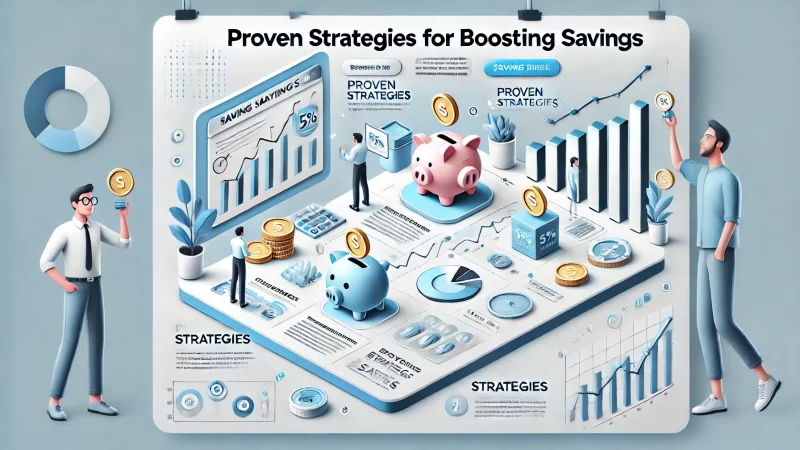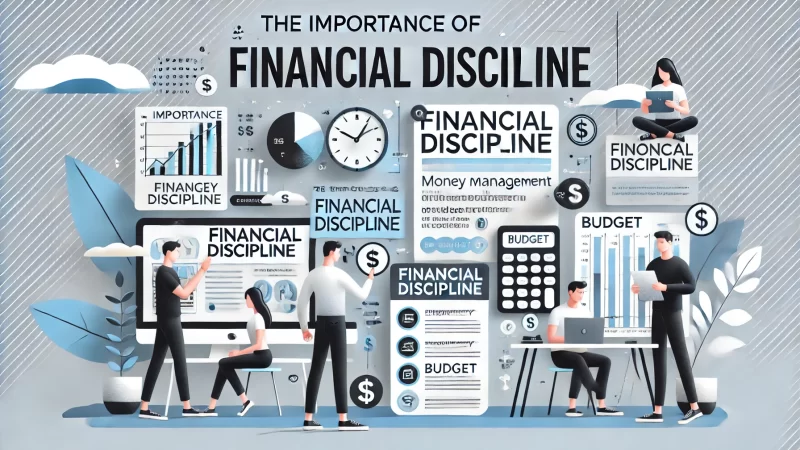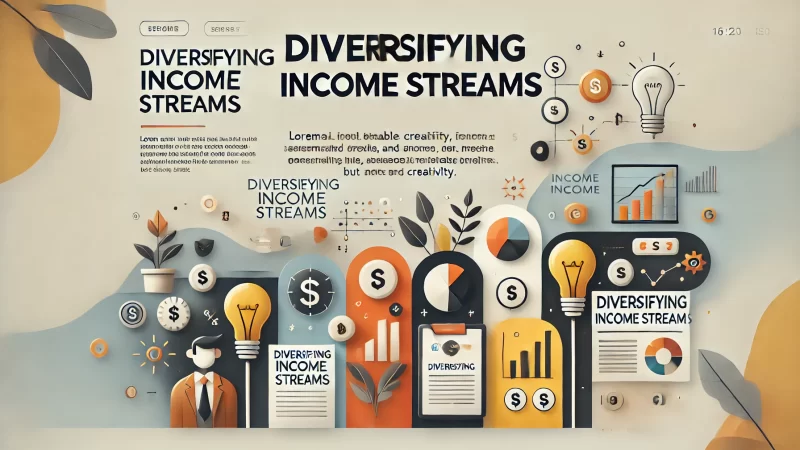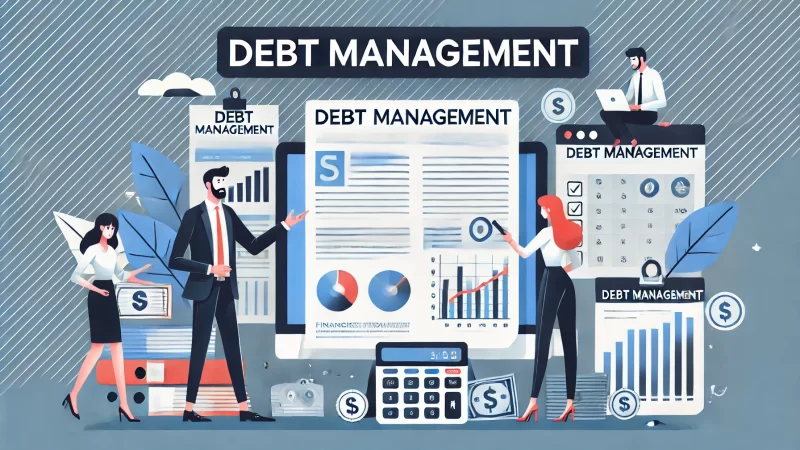Do you want to take control of your financial future? Are you wondering how to set goals that can truly transform your life? Setting financial goals can seem daunting, but it doesn’t have to be. With the right approach, you can start today and build a clear roadmap to achieve life-changing financial goals.
In this article, we’ll explore how to create realistic financial objectives, stick to them, and celebrate your milestones along the way. You’ll learn how to break down your goals, manage your income, and maintain discipline, making financial success more attainable than ever before.
How Setting Clear Financial Goals Can Transform Your Future

Financial goals are the compass that guide your financial decisions and long-term success. When you set clear financial goals, you provide yourself with a sense of purpose and direction. By defining these goals, you can focus on what truly matters and eliminate distractions. I believe this approach leads to better financial choices and long-term stability.
Moreover, financial goals allow you to measure your progress and celebrate your achievements. These milestones help you stay motivated and reinforce positive financial habits. Whether you’re saving for a home or building wealth for retirement, setting clear goals is the foundation for success and the key to transforming your financial future.
Understanding The Importance Of Financial Goals
Financial goals create a sense of accountability, which I’ve found to be vital for achieving success. When you have a clear target in mind, every financial decision becomes more intentional. You’re not just saving or spending aimlessly but working toward something meaningful—whether that’s financial independence or a major purchase.
I suggest thinking of financial goals as your personal roadmap to success. With defined goals, you’ll prioritize saving, investing, and cutting unnecessary expenses, all of which contribute to reaching your objectives. This clarity also reduces stress, as you’ll have a better sense of where your money is going and how it’s helping you achieve your dreams.
I also emphasize that financial goals give you control over your money. Instead of reacting to financial situations, you proactively manage your finances with purpose. This proactive approach allows you to plan for the future while enjoying the present, reducing the fear of the unknown.
People often overlook the psychological impact of financial goals. When I set a clear goal, I feel more confident and motivated. This positive mental shift is crucial for staying committed to long-term plans. You’ll find that every small victory along the way fuels your desire to keep going.
Lastly, achieving financial goals leads to a sense of accomplishment that boosts your overall well-being. It’s more than just about the money—it’s about building a life that reflects your values, dreams, and aspirations. I think the value of this can’t be overstated.
Short-Term vs Long-Term Financial Goals: Key Differences
The distinction between short-term and long-term financial goals is essential for structuring your financial plan effectively. Short-term goals are typically achievable within a year and might include things like saving for a vacation or paying off a small loan. Long-term goals, however, are those that take several years, such as retirement or buying a home.
I often recommend starting with short-term goals because they are easier to achieve and provide quick wins that boost your confidence. Short-term goals lay the groundwork for larger ambitions. Achieving smaller goals motivates you to stick with your plan for the long haul, leading to more significant financial success over time.
Long-term goals, on the other hand, require patience and consistent effort. I’ve learned that breaking down these goals into smaller steps makes them more manageable. For instance, if your long-term goal is to save $100,000, divide that into monthly or annual savings targets to make the process less overwhelming.
One major difference is how you manage the timeline. I recommend creating different strategies for both types of goals. Short-term goals require more immediate action, while long-term goals benefit from investments and compounded growth. Keeping both in balance ensures that you’re building a strong financial future without neglecting present needs.
Ultimately, short-term and long-term goals work together. I’ve noticed that the satisfaction of achieving short-term goals encourages people to stick to their long-term financial plans. This combination of quick wins and patient planning is the key to financial success.
How To Align Financial Goals With Your Life Priorities
Aligning financial goals with your life priorities ensures that your financial plan reflects your values. I always suggest asking yourself what’s most important—whether it’s family, personal freedom, or security—and building your financial goals around those priorities. This ensures that you’re not just accumulating wealth but creating a life that aligns with your deeper desires.
One way to do this is by examining your long-term vision. For instance, if financial independence is a top priority, your goals should focus on investments, savings, and cutting unnecessary costs. I think focusing on the “why” behind your goals helps you stay motivated, even when the road gets tough.
I also advise considering your family’s needs when setting financial goals. If you’re planning for your children’s future or saving for a home, these priorities should be reflected in your financial goals. By aligning your finances with these priorities, you’ll create a more cohesive plan that balances short-term needs with long-term aspirations.
It’s important to regularly reassess your life priorities, as they may change over time. For example, you might initially prioritize saving for travel, but later shift focus to buying a home or starting a business. I find that being flexible with your financial goals ensures that they evolve as your life does.
Finally, I’ve learned that aligning financial goals with personal values leads to greater satisfaction. When your money supports what matters most to you, you’ll feel more fulfilled and less stressed about finances. This connection between values and goals is the true measure of financial success.
Why Financial Goals Are Essential For Achieving Stability
Financial goals provide a framework for stability. Without clear goals, it’s easy to fall into financial chaos, where spending is reactive rather than planned. I know that setting financial goals gives you a clear sense of direction, making it easier to navigate uncertainties like emergencies or unexpected expenses.
One key benefit of financial goals is that they promote consistency. I recommend setting up automated systems, such as recurring transfers to a savings account, to ensure that you’re always working toward your goals. This consistency builds financial security over time, providing a cushion for life’s surprises.
Another reason financial goals foster stability is that they reduce impulsive spending. I believe that when you’re focused on a goal, you’re less likely to spend money on things that don’t matter. Every dollar has a purpose, making your financial decisions more deliberate and aligned with your long-term objectives.
Financial goals also encourage you to build a solid emergency fund, which is crucial for financial stability. I always advise having at least three to six months’ worth of expenses saved for emergencies. This fund acts as a safety net, protecting you from financial setbacks while you continue working toward larger goals.
In the end, financial goals are the foundation of lasting stability. When you’re clear about what you want to achieve, you’re better equipped to handle financial challenges and opportunities. I’ve found that this clarity and preparation create a sense of peace and control over your financial future.
Common Mistakes To Avoid When Setting Financial Goals
While setting financial goals is crucial, there are common mistakes that can derail your progress. I’ve seen people set goals that are too vague or unrealistic, making it difficult to stay committed. I always suggest being as specific as possible, such as aiming to save $10,000 in six months rather than just “saving more.”
Another mistake I’ve noticed is failing to track progress. Without regular check-ins, it’s easy to lose sight of your goals. I recommend setting up a monthly or quarterly review to assess how you’re doing. This helps you make adjustments as needed and keeps you accountable for reaching your targets.
I also caution against setting too many goals at once. When you spread yourself too thin, it becomes challenging to focus on any one goal. I believe it’s better to prioritize one or two key financial goals and devote your resources and energy to them before moving on to others.
Some people also fail to adjust their goals as circumstances change. I’ve experienced that life events—such as job changes, health issues, or family responsibilities—can impact your financial plan. It’s essential to remain flexible and revise your goals as needed to reflect your current situation and priorities.
Lastly, I often see people giving up too soon. Achieving financial goals takes time, and setbacks are inevitable. I always encourage perseverance. Stick to your plan, celebrate small wins, and keep your eyes on the bigger picture. Success will come with patience and commitment.
Building A Practical Roadmap For Achieving Your Financial Goals

Creating a practical roadmap is essential for turning financial goals into reality. I believe having a structured plan helps you stay on track and focused. A roadmap outlines the specific steps needed to achieve your objectives and allows you to measure your progress along the way, boosting confidence and motivation.
With a roadmap, you have a clear guide that helps break down overwhelming financial goals into manageable tasks. I recommend starting with a realistic assessment of your current financial situation, identifying your short-term and long-term goals, and prioritizing them. This clarity is the first step in building a solid financial foundation.
What Is A Financial Roadmap And Why You Need One
A financial roadmap is your personalized plan to achieve your financial goals. I often compare it to a GPS for your finances; it shows you the best route to take and highlights the milestones along the way. Without it, I’ve seen people struggle with indecision and waste time pursuing ineffective strategies.
I suggest viewing your financial roadmap as a series of actionable steps. It’s not just a list of goals, but a detailed guide that tells you exactly what to do next. I emphasize that having this plan increases your chances of reaching your goals, as you’re not just relying on hope—you have a strategy.
What I love about financial roadmaps is that they also prepare you for potential detours. Life is unpredictable, and having a plan means you’re better equipped to handle setbacks without losing sight of your goals. I’ve noticed that this flexibility is crucial for long-term success.
The roadmap also helps in setting realistic expectations. I think many people aim too high too quickly, which leads to frustration. By following a financial roadmap, you’ll pace yourself, ensuring sustainable progress without feeling overwhelmed. It’s all about making steady, meaningful improvements.
Lastly, I find that a financial roadmap boosts accountability. When you’ve got a plan written down, it’s harder to procrastinate. You’ll feel a sense of responsibility toward your goals, knowing that each step takes you closer to financial freedom or security.
How To Break Down Your Financial Goals Into Manageable Steps
Breaking financial goals into manageable steps is key to making progress. I recommend starting with small, achievable milestones that build toward your larger objectives. This makes even the most daunting financial goals feel more attainable and keeps you motivated along the way.
One effective strategy is to categorize your goals based on timelines. I often advise setting daily, weekly, or monthly tasks that contribute to your long-term financial vision. For example, setting aside a specific amount each month toward savings or debt repayment helps you stay consistent without feeling overwhelmed.
I also think it’s important to set up automatic systems to streamline progress. Automating savings or debt payments takes the guesswork out of financial planning, ensuring you make progress without constantly monitoring your accounts. I’ve seen this approach help people reach their goals faster with less effort.
Creating deadlines for each financial step is another useful tip. I suggest marking specific dates in your calendar for each task. This holds you accountable and makes it harder to delay action. For instance, set a target date for paying off a portion of debt, and stick to it.
Finally, I recommend celebrating small victories along the way. Reaching each step in your financial journey is a success worth acknowledging. Whether it’s saving your first $1,000 or paying off a credit card, these wins reinforce your commitment to your overall financial goals.
Using SMART Goals To Achieve Financial Success
SMART goals—specific, measurable, achievable, relevant, and time-bound—are a powerful tool for financial success. I’ve found that setting SMART goals provides clarity and focus, turning vague aspirations into actionable plans. For instance, instead of saying “I want to save more,” a SMART goal would specify “I will save $5,000 by the end of the year.”
I always recommend making your goals measurable. When I track my progress, it becomes easier to see how far I’ve come, which keeps me motivated. Whether you’re saving money or paying off debt, setting clear, measurable targets lets you monitor success and adjust as needed.
Another aspect I emphasize is setting achievable goals. I’ve noticed that setting goals too high can lead to burnout and frustration. I suggest setting realistic expectations that challenge you but are still within reach. For example, if you’re starting with little savings, aim for gradual increases each month rather than massive leaps.
Relevance is key when setting financial goals. I often advise clients to ask themselves if a goal aligns with their overall financial vision. Are you saving for something that truly matters to you? Ensuring that each goal serves your broader financial objectives keeps you focused on what’s most important.
Lastly, every goal should be time-bound. I suggest giving yourself a specific deadline for each goal. Whether it’s six months or a year, having an end date creates a sense of urgency that encourages action. This timeline keeps you on track and ensures consistent progress.
Creating A Budget That Reflects Your Financial Goals
A budget is the backbone of any financial roadmap. I recommend creating a budget that reflects your financial goals, as it acts as a daily tool for managing money and staying on track. Without a budget, I find it’s easy to lose sight of where your money is going, which can derail your goals.
Start by listing your income and expenses. I suggest categorizing your spending into needs and wants. This helps you prioritize essential expenses while identifying areas where you can cut back. I’ve noticed that small adjustments in spending can free up more money for your financial goals.
Next, align your budget with your financial priorities. If saving for a home or paying off debt is your goal, allocate a significant portion of your income to these areas. I believe that making these priorities visible in your budget increases your commitment to achieving them.
I also advise adjusting your budget as your financial situation evolves. Life changes, such as job shifts or new expenses, may require you to reassess your budget. I’ve found that regularly updating your budget ensures it remains relevant and effective for reaching your goals.
Finally, I recommend using budgeting apps or tools. These make it easier to track spending, stay within limits, and monitor your progress. I think using technology to manage your budget is a smart way to ensure you’re always working toward your financial objectives.
Tracking Progress And Adjusting Your Financial Plan
Tracking progress is essential for financial success. I suggest setting regular check-ins, whether monthly or quarterly, to evaluate your progress toward your goals. By consistently reviewing your financial plan, you can make adjustments as needed and stay on track.
Start by comparing your actual progress to your projected milestones. I’ve learned that seeing how close or far you are from your goals provides valuable insights. If you’re ahead, you can push further; if behind, it’s an opportunity to reassess your approach.
I also recommend adjusting your plan when life changes occur. Financial plans aren’t set in stone. I think flexibility is key to maintaining long-term success. If you experience changes in income or unexpected expenses, revising your plan ensures it remains effective.
Celebrating milestones is another important aspect of tracking progress. I believe that acknowledging each achievement keeps you motivated and reinforces positive financial behaviors. These small celebrations serve as a reminder of how far you’ve come.
Finally, I suggest using financial tracking tools or apps to monitor your progress in real-time. I find these tools offer an easy way to visualize your growth and keep you accountable, whether it’s for savings, debt reduction, or investment goals.
Proven Strategies For Boosting Savings And Growing Your Wealth

Growing wealth and building savings require a disciplined approach. I’ve noticed that having proven strategies in place accelerates your progress toward financial goals. Whether you’re saving for an emergency fund, retirement, or future investments, implementing consistent practices can make a significant difference in your financial well-being.
Additionally, I recommend diversifying your savings approach. Exploring various saving methods allows you to grow your wealth while also ensuring you’re prepared for unexpected financial needs. With the right strategies, you can increase your financial security and achieve your long-term objectives more efficiently.
How To Automate Your Savings To Reach Financial Goals Faster
Automating your savings is one of the most effective ways to build wealth. I often suggest setting up automatic transfers from your checking account to your savings or investment accounts. This system ensures that you’re consistently saving without the temptation to spend the money elsewhere.
I’ve found that automating savings removes the element of decision-making, which can sometimes lead to procrastination. By scheduling transfers, you make saving a non-negotiable part of your routine, helping you reach your financial goals faster with minimal effort.
In addition to direct savings, I advise automating contributions to retirement accounts, such as a 401(k) or IRA. I’ve seen this strategy work wonders for those aiming to grow wealth for the long term. Consistent contributions over time, even in small amounts, can significantly impact your retirement savings.
I also suggest automating extra debt payments if you’re working toward becoming debt-free. Just as with savings, this automated approach accelerates your progress without requiring constant effort or decision-making. It’s a simple yet powerful way to meet your financial goals.
Lastly, I recommend reviewing your automated savings plan periodically. Life changes may require you to adjust how much you’re saving each month. I think that regularly revisiting your savings strategy ensures it remains aligned with your financial goals and current circumstances.
High-Interest Savings Accounts: A Smart Move For Financial Growth
High-interest savings accounts can boost your savings efforts. I always recommend these accounts because they offer better returns than standard savings accounts. Over time, this added interest can make a significant difference in how quickly your wealth grows, especially if you’re saving for long-term goals.
These accounts are also ideal for emergency funds. I find that keeping emergency savings in a high-interest account allows your money to work for you while still being accessible when needed. You’ll earn interest without the risk of locking up your funds in investments.
When choosing a high-interest savings account, I suggest looking for accounts with no fees. I’ve noticed that some accounts offer great interest rates but come with maintenance fees that can eat into your earnings. Be sure to compare options and choose one that maximizes your returns.
Another strategy is to set up automatic transfers to your high-interest savings account. I believe this ensures you’re consistently contributing and earning interest on a regular basis, allowing your wealth to grow passively over time. Every little bit counts.
Lastly, I advise monitoring interest rate changes. While high-interest accounts are beneficial, their rates can fluctuate. By staying informed, you can make adjustments as necessary to ensure your savings strategy remains effective in maximizing growth.
How To Set Up An Emergency Fund While Pursuing Other Financial Goals
Balancing multiple financial goals can be tricky, but setting up an emergency fund is essential. I recommend starting with small contributions if you’re juggling other financial priorities. Even $50 a month can add up over time, creating a safety net for unexpected expenses.
I always advise setting a clear goal for your emergency fund. I’ve found that aiming for three to six months’ worth of living expenses is ideal. This gives you enough financial cushion to cover unforeseen costs, like medical bills or car repairs, without derailing your other financial goals.
Automating contributions to your emergency fund ensures consistency. I recommend setting up a separate account, ideally a high-interest one, so your emergency savings grow while remaining accessible. This strategy helps you build your fund steadily without worrying about accidentally spending the money.
I suggest prioritizing your emergency fund, even if it means delaying other financial goals temporarily. While it’s tempting to focus on debt repayment or investments, having an emergency fund provides peace of mind. It ensures you won’t have to take on high-interest debt if unexpected expenses arise.
Finally, once you’ve built your emergency fund, I advise shifting your focus to other financial goals, like saving for retirement or paying off loans. I believe having this financial cushion in place allows you to pursue other objectives more confidently and aggressively.
Simple Saving Habits That Lead To Long-Term Financial Success
Developing simple saving habits is the key to long-term financial success. I think starting with small, manageable changes, like cutting down on unnecessary expenses, can have a significant impact over time. These savings, no matter how small, contribute to your bigger financial goals.
I also recommend setting specific, achievable savings goals. Whether it’s saving for a vacation or building an emergency fund, having clear targets helps you stay focused. I’ve noticed that breaking these goals into smaller steps makes them more attainable and keeps you motivated along the way.
Another saving habit I’ve adopted is automating my savings. By setting up automatic transfers, I ensure that a portion of my income goes into savings without thinking about it. This simple practice has helped me stay consistent, and I believe it’s a strategy that can work for anyone.
I advise reviewing your spending habits regularly. I find that tracking where your money goes helps you identify areas where you can cut back and save more. Whether it’s a subscription service or daily coffee runs, small adjustments can free up extra cash to put toward your savings.
Finally, I suggest rewarding yourself occasionally. While saving is important, I’ve learned that allowing yourself small rewards keeps the process enjoyable. This balance between saving and spending prevents burnout and keeps you on track for long-term financial success.
How To Prioritize Saving For Retirement Alongside Other Financial Goals
Saving for retirement is a critical financial goal, but balancing it with other priorities can be challenging. I recommend starting with a small percentage of your income and gradually increasing it over time. This ensures that you’re consistently contributing while also addressing more immediate financial needs.
One strategy I’ve found helpful is to take advantage of employer-sponsored retirement plans, such as a 401(k). I suggest contributing enough to get the full employer match, as this is essentially free money that boosts your retirement savings. It’s a simple way to maximize your contributions without sacrificing other goals.
I believe setting up an IRA is another effective way to prioritize retirement savings. Whether it’s a traditional or Roth IRA, these accounts offer tax advantages that help your money grow faster. I recommend automating your contributions to ensure that you’re consistently saving for retirement.
If you have multiple financial goals, I advise dividing your savings accordingly. For example, allocate a certain percentage to retirement while also setting aside money for short-term goals, like an emergency fund. This balanced approach ensures that you’re addressing all aspects of your financial future.
Finally, I suggest revisiting your retirement plan regularly. As your income grows or your financial situation changes, you may be able to increase your retirement contributions. I believe staying flexible and adjusting your plan as needed is the key to long-term financial success.
The Importance Of Financial Discipline In Achieving Major Life Goals

Financial discipline plays a crucial role in helping you reach your long-term goals. I believe that without discipline, even the best financial plan can falter. By staying committed to your budget and avoiding unnecessary spending, you set yourself up for financial success and reduce the chances of costly mistakes.
Moreover, practicing financial discipline helps you navigate life’s unexpected challenges. I suggest creating a system that keeps you accountable, whether through automated savings or regular expense tracking. This not only keeps you on the right path but also ensures you’re prepared for any financial hurdles that may arise.
How To Cultivate Financial Discipline For Lasting Success
Cultivating financial discipline starts with setting clear boundaries. I always recommend creating a budget that reflects your financial priorities. By knowing exactly where your money should go each month, you’re less likely to fall into the trap of impulse purchases. This intentional approach keeps you aligned with your goals.
Another way to build discipline is through automation. I advise setting up automatic transfers to your savings or investment accounts. This removes the temptation to spend and ensures you’re consistently saving. It’s a strategy that helps build long-term financial habits without needing constant self-control.
I’ve learned that tracking your progress regularly also strengthens discipline. When you review your finances, you’re more likely to catch areas of overspending and make adjustments. I suggest setting monthly or quarterly financial reviews to see how well you’re sticking to your plan and to adjust accordingly.
Rewards are also important for cultivating discipline. I find that allowing small, planned indulgences can prevent feelings of deprivation, making it easier to stick to your long-term goals. The key is moderation—treat yourself without veering off your financial path.
Lastly, I recommend surrounding yourself with positive influences. Whether it’s through financial education or a community of like-minded individuals, staying connected with others who prioritize financial success helps reinforce your own discipline. The more you learn, the easier it becomes to maintain self-control.
Understanding Delayed Gratification And Its Role In Achieving Financial Goals
Delayed gratification is a powerful tool for achieving financial success. I’ve noticed that those who can resist immediate rewards often reach their financial goals faster. It’s about prioritizing long-term gains over short-term pleasures, which can significantly boost your savings or investment efforts.
I suggest practicing delayed gratification by setting clear financial milestones. For example, instead of spending on non-essentials now, plan to reward yourself after reaching a savings goal. This approach builds anticipation while keeping your finances intact. I believe this mindset helps avoid impulse purchases and creates lasting financial habits.
I’ve found that one effective way to strengthen delayed gratification is by visualizing your long-term goals. Whether it’s a dream vacation, a house, or retirement, keeping these in mind helps you stay focused on the bigger picture. I recommend creating a vision board or journaling to remind yourself of what you’re working toward.
Balancing small rewards with delayed gratification is also essential. I often suggest setting up a reward system that doesn’t break the bank. For instance, treat yourself to a nice meal after hitting a savings target, but avoid splurging on major purchases until you’ve reached a more significant goal.
Over time, delayed gratification becomes easier. I’ve experienced that the more you practice it, the more you appreciate the long-term benefits. Each time you resist a short-term temptation, you reinforce the habit of saving and investing in your future, bringing you closer to financial freedom.
Overcoming Temptation And Staying Focused On Your Financial Goals
Overcoming temptation is a key challenge in sticking to financial goals. I’ve seen that without a plan, it’s easy to get sidetracked by sales, new gadgets, or social pressures. I suggest identifying your financial triggers—whether it’s impulse buys or lifestyle inflation—and actively working to avoid them.
One method I recommend is creating a “cooling-off” period before making any non-essential purchases. This simple tactic gives you time to reconsider whether you truly need the item or if it’s an impulse. I’ve found that after a few days, the urge to buy often fades, keeping your budget intact.
Setting reminders of your goals can also help you stay focused. I’ve tried placing notes or reminders in key areas, like your wallet or phone, that encourage you to think twice before spending. These constant reminders reinforce your long-term vision and keep financial temptations at bay.
I believe that avoiding situations that trigger spending is another effective strategy. For example, I recommend limiting time spent on shopping websites or unsubscribing from marketing emails. By reducing exposure to spending opportunities, you minimize the temptation to make unplanned purchases.
Finally, I think it’s important to stay motivated by celebrating your progress. Acknowledging each financial milestone reminds you of why you’re making sacrifices in the first place. These celebrations keep you excited about your goals and help you maintain focus.
Rewarding Yourself Without Derailing Your Financial Goals
Rewarding yourself is essential to staying motivated, but it’s important to do so without harming your financial progress. I recommend planning rewards that are budget-friendly and aligned with your long-term goals. For example, treat yourself to an experience rather than buying an expensive item that could set you back.
I suggest setting up small, milestone-based rewards. Each time you hit a savings target or pay off a chunk of debt, give yourself something to look forward to. I’ve found that this approach keeps motivation high while ensuring you don’t overspend in the process.
Another tip is to use a portion of any financial windfalls—such as a bonus or tax refund—as a reward. I advise allocating a percentage to savings and then using the rest for something fun. This way, you’re treating yourself without derailing your financial goals. It’s a win-win.
I also encourage exploring free or low-cost rewards. Activities like a movie night at home, a hike, or visiting a local park can feel just as satisfying without adding to your expenses. I think the key is to find joy in experiences rather than material items.
Finally, I recommend keeping long-term goals in perspective when rewarding yourself. While it’s important to enjoy the present, I believe maintaining a balance ensures that today’s rewards don’t jeopardize tomorrow’s financial success.
The Power Of Consistency In Financial Success
Consistency is the secret weapon in achieving financial success. I’ve seen firsthand that those who consistently save, budget, and invest are far more likely to reach their goals. It’s not about grand gestures but about steady, disciplined effort over time that builds wealth and financial security.
I suggest setting up automatic savings contributions as a way to ensure consistency. Automating deposits into your savings or retirement accounts eliminates the need for daily decision-making, keeping you on track even when life gets busy. I’ve found this tactic incredibly effective for maintaining momentum.
Small, regular actions lead to big results. Whether it’s saving $100 a month or paying down debt in small increments, I believe that every step counts. These consistent efforts compound over time, bringing you closer to your financial goals without feeling overwhelmed.
I also recommend tracking progress consistently. Regular reviews of your budget and goals help you stay focused and make necessary adjustments. I’ve noticed that seeing tangible results, even if small, motivates continued effort and reinforces positive financial habits.
Finally, I think celebrating consistency is crucial. Acknowledge each month you stick to your plan, as it reinforces the behavior. Over time, these consistent actions become second nature, leading to lasting financial success without feeling like a constant struggle.
Diversifying Income Streams To Accelerate Your Financial Growth

Diversifying your income streams is a proven way to accelerate financial growth. I’ve seen that relying on a single income source limits your potential, while multiple streams open up opportunities for wealth building. By adding new income streams, you increase your financial security and open doors to faster wealth accumulation.
This approach also helps mitigate risk. I suggest considering side hustles, investments, or passive income opportunities to diversify your earnings. These additional streams not only boost your savings but provide financial resilience in case your primary income source is impacted.
Exploring Different Types Of Income Streams For Financial Security
Exploring various income streams is essential for long-term financial security. I recommend starting with side gigs or freelance work that complements your skills. These can offer flexibility and provide an extra income boost without requiring a complete career change.
Another option is to invest in assets that generate passive income. I’ve found that investments like rental properties, dividend-paying stocks, or even peer-to-peer lending can create a steady cash flow with minimal day-to-day involvement. This method helps your money work for you while reducing the reliance on a single paycheck.
Building an online business is another income stream worth exploring. I’ve seen many people leverage e-commerce, digital products, or consulting services to create new sources of income. I suggest starting small and scaling as you learn what works best for your business.
If you’re looking for a lower-effort option, I recommend exploring high-yield savings accounts or CDs. While the returns may be smaller, these are low-risk ways to generate additional income. It’s a passive method that can complement your broader financial strategy.
Finally, I advise focusing on building streams that align with your long-term goals. Diversifying income should be about more than just making extra money. By selecting streams that align with your passions and values, you ensure they’re sustainable and fulfilling.
How Passive Income Can Help You Achieve Financial Independence
Passive income is a game-changer in the journey to financial independence. I believe it’s one of the most effective ways to build wealth without actively trading time for money. By creating sources of passive income, you free yourself from the limitations of a traditional salary and open up greater financial opportunities.
One of the most common forms of passive income is investing. Whether through stocks, bonds, or real estate, I recommend exploring investments that generate returns over time. These assets continue to grow without requiring constant effort, helping you accumulate wealth while you focus on other goals.
Rental properties are another excellent source of passive income. I’ve seen that owning real estate can provide a consistent stream of income while also offering long-term appreciation. While there is upfront work, once systems are in place, rental properties can generate reliable passive earnings.
Online businesses can also create passive income. I advise setting up automated systems, such as selling digital products or affiliate marketing, to keep revenue flowing even when you’re not actively working. This method allows you to scale your income without increasing your workload.
Lastly, I recommend reinvesting passive income back into your wealth-building strategies. Whether it’s putting dividends back into the stock market or using rental income to purchase more properties, I’ve found that reinvesting helps compound your wealth and accelerates financial independence.
The Role Of Investments In Strengthening Financial Goals
Investments play a critical role in reaching financial goals. I believe that a well-thought-out investment strategy can fast-track your journey toward financial independence. By growing your wealth through investments, you not only increase your net worth but also create new opportunities for financial security.
One of the first steps I suggest is identifying your risk tolerance. Different investments carry varying levels of risk, and I think it’s important to choose options that align with your comfort level. Whether it’s stocks, bonds, or real estate, selecting the right mix of investments helps you build a balanced portfolio.
I also recommend focusing on long-term growth. While short-term gains can be tempting, I’ve noticed that those who stick to a long-term strategy often see better results. Investments like index funds or dividend-paying stocks grow steadily over time, helping you reach larger financial goals with patience and consistency.
Another key to strengthening financial goals is diversification. I advise spreading your investments across different asset classes to minimize risk and maximize potential returns. This strategy helps cushion your portfolio against market volatility while ensuring consistent growth over time.
Finally, I believe in regularly reviewing your investment portfolio. Financial markets change, and it’s essential to reassess your investments to ensure they still align with your goals. This proactive approach helps you stay on track and adjust as needed for maximum financial success.
Turning Hobbies Into Side Income To Fund Financial Goals
Turning your hobbies into side income is a great way to fund your financial goals. I’ve seen that when people monetize what they love, it doesn’t feel like work, making it easier to stick with. Whether it’s photography, writing, or crafting, turning passion projects into profit can accelerate your financial journey.
One of the first steps I recommend is identifying hobbies that have market potential. If people already ask for your services or are willing to pay for your products, you’ve got a good starting point. I suggest researching demand and competitors to see where your hobby fits into the marketplace.
Setting up an online platform can help you reach more customers. Whether through social media, a personal website, or online marketplaces like Etsy, I believe promoting your hobby-turned-business online opens up new opportunities for income. The key is to start small and grow as you gain experience.
I also advise treating your side income like a business. While it may start as a hobby, maintaining professionalism helps you scale faster. Setting clear goals, managing finances, and reinvesting profits back into the business ensure that your side income grows over time.
Lastly, I suggest balancing your hobby with your primary job or responsibilities. While extra income is great, I’ve found that managing your time effectively ensures you don’t burn out. Finding a balance between work, side income, and relaxation is the key to sustaining both your passion and your financial growth.
How To Balance Multiple Income Streams Without Losing Focus
Balancing multiple income streams can be tricky, but I believe it’s possible with the right strategy. I suggest starting by prioritizing your primary income stream. Focusing on your main job or business ensures stability, while additional streams provide extra financial support.
One tip I’ve found helpful is time management. I recommend setting specific time blocks for each income stream. Whether it’s an hour a day for a side hustle or weekend work on a passive income project, creating a structured schedule helps you stay organized without becoming overwhelmed.
Delegating tasks is another effective way to balance multiple streams. I suggest outsourcing smaller tasks or automating parts of your business when possible. This frees up time for more important work, allowing you to grow each income stream without sacrificing focus.
Regularly assessing the profitability of each income stream is crucial. I believe that if an income source isn’t contributing significantly to your financial goals, it’s worth reconsidering its value. Focusing on the most lucrative streams ensures that you maximize your efforts without spreading yourself too thin.
Lastly, I recommend using tools or apps to track your various income streams. I’ve found that staying organized with financial software or a detailed spreadsheet helps you monitor performance and make data-driven decisions. This clarity ensures that you can manage multiple streams effectively while still progressing toward your financial goals.
Using Debt Management To Support Your Long-Term Financial Goals

Effectively managing debt is critical for achieving long-term financial goals. I believe that unchecked debt can become a major obstacle, draining resources that could otherwise be used for saving and investing. By implementing solid debt management strategies, you can regain control of your finances and focus on future wealth-building opportunities.
Managing debt wisely also reduces stress. I suggest creating a clear plan for repaying debt while balancing your other financial goals. Whether it’s consolidating high-interest debt or setting up automated payments, every step toward reducing debt strengthens your financial foundation and ensures long-term success.
Why Debt Can Be An Obstacle To Achieving Financial Goals
Debt can derail even the best financial plans if not managed properly. I’ve noticed that high-interest debt, in particular, can eat away at your budget, leaving little room for savings or investments. The longer debt accumulates, the harder it becomes to focus on achieving financial goals like homeownership or retirement savings.
One reason debt is such a challenge is that it reduces your financial flexibility. When a large portion of your income goes toward debt repayment, there’s less room for unexpected expenses or investing in long-term goals. I always recommend tackling debt head-on to free up more financial resources.
I’ve found that debt also impacts your ability to borrow for essential life goals. If you’re carrying high balances, lenders may hesitate to approve mortgages or car loans. I advise clients to reduce their debt-to-income ratio, improving creditworthiness and opening doors to new financial opportunities.
In addition to financial constraints, debt can weigh on your mental well-being. The constant pressure of owing money may lead to stress and anxiety. I believe that by creating a solid repayment plan, you can ease this burden, allowing you to focus more clearly on building a secure financial future.
Finally, debt slows down the process of wealth-building. Instead of contributing to savings or investments, your income is being diverted to pay interest. I recommend developing strategies to reduce and eventually eliminate debt, allowing you to fully commit to long-term financial goals.
How To Consolidate And Pay Off Debt Faster To Meet Financial Goals
Debt consolidation is a powerful way to manage multiple high-interest debts. I’ve found that combining all your debts into one loan with a lower interest rate simplifies repayment and can save you money. This approach is especially useful if you’re juggling several loans or credit card balances.
I also recommend setting up automated payments to avoid missed deadlines. Consistent payments help reduce debt faster, as you won’t incur late fees or additional interest. Automating your debt payments is an easy way to ensure you’re staying on track without worrying about due dates.
Another strategy I suggest is increasing your monthly payment amounts. Even small extra payments can accelerate debt reduction significantly. For example, paying an additional $50 each month can shorten your loan term and reduce the overall interest you’ll pay.
If you receive a financial windfall—such as a bonus or tax refund—I advise using it to pay down debt. Lump-sum payments can make a noticeable dent in your debt balance, bringing you closer to financial freedom. I’ve seen this tactic help people reduce their debt far more quickly than expected.
Lastly, I recommend staying disciplined throughout the process. It’s easy to get discouraged, but I’ve found that sticking to your plan and making consistent payments is the key to becoming debt-free. With persistence, you’ll regain control of your finances and free up money for other goals.
Using Debt Wisely: When Taking On Debt Can Align With Your Financial Goals
While debt often gets a bad reputation, I believe that when used strategically, it can support long-term financial goals. For instance, taking on a mortgage can be a smart way to build equity and invest in property. In this case, the debt is helping you grow your wealth rather than holding you back.
I also suggest considering low-interest loans for education or career advancement. If furthering your education increases your earning potential, the debt can pay off in the long run. I’ve seen people benefit greatly from this type of investment in themselves, as it opens doors to higher-paying job opportunities.
Another scenario where debt may align with your goals is when borrowing to fund a business venture. If you have a solid business plan and the potential for growth, taking on a business loan can accelerate success. I advise ensuring the terms are favorable and that you’re prepared to manage the repayments responsibly.
Debt can also be a tool for leveraging investments. Some investors take out loans to invest in real estate or the stock market. However, I caution that this approach carries risk, and I recommend consulting a financial advisor to ensure it aligns with your risk tolerance and long-term goals.
Ultimately, using debt wisely requires careful planning. I think it’s essential to weigh the potential benefits against the risks and ensure that any debt you take on has a clear purpose that moves you closer to financial success, not further from it.
Debt Snowball vs Debt Avalanche: Choosing The Right Approach For Your Financial Goals
When it comes to paying off debt, I’ve found that two popular methods—debt snowball and debt avalanche—can be highly effective. The debt snowball method focuses on paying off smaller balances first, which builds momentum. I recommend this approach if you need quick wins to stay motivated.
In contrast, the debt avalanche method prioritizes high-interest debt first. I advise using this method if you want to minimize the amount of interest you’ll pay over time. While it may take longer to see progress, the long-term savings can be significant.
Both methods require consistent payments, and I suggest choosing the one that best fits your personality and financial situation. If seeing small debts disappear quickly keeps you motivated, the snowball method could be ideal. But if reducing the total cost of debt is your priority, avalanche is a smarter choice.
I’ve noticed that some people combine both methods. For example, you can start with the snowball method to clear smaller debts and then switch to the avalanche method for larger, high-interest loans. This hybrid approach offers flexibility and can adapt to your changing financial needs.
Whichever method you choose, I believe the most important factor is consistency. Regular payments, regardless of the method, will gradually reduce your debt and move you closer to financial freedom. The key is to stick with your plan and stay focused on your long-term goals.
How To Avoid The Trap Of High-Interest Debt While Pursuing Financial Goals
Avoiding high-interest debt is crucial for achieving financial stability. I’ve seen that the longer you carry high-interest balances, the harder it becomes to save or invest. I recommend avoiding credit card debt whenever possible, as these tend to have the highest interest rates that quickly spiral out of control.
If you do need to borrow, I advise seeking out loans with low interest rates. Whether it’s a mortgage or a personal loan, shopping around for the best rates can save you a substantial amount in interest payments. I think it’s always worth negotiating or improving your credit score to qualify for better terms.
Building an emergency fund is another important strategy for avoiding high-interest debt. I’ve found that having cash reserves allows you to cover unexpected expenses without resorting to credit cards. This simple step can protect you from accumulating costly debt during financial emergencies.
I also suggest regularly paying off your credit card balances in full each month. This habit keeps you from accruing interest while maintaining a healthy credit score. I’ve noticed that even a small credit card balance can lead to significant interest charges if left unpaid.
Lastly, I recommend monitoring your debt regularly. Keeping track of balances, interest rates, and payment schedules helps you stay on top of your financial situation. By being proactive, you can avoid falling into the trap of high-interest debt and stay focused on your long-term financial goals.
Effective Financial Planning For A Secure Future

Effective financial planning is essential for creating a secure future. I believe that a well-organized plan not only prepares you for major life events but also ensures that your financial goals are met with confidence. Whether it’s saving for retirement or managing day-to-day expenses, financial planning gives you control over your financial destiny.
Financial planning also offers peace of mind. I suggest building a comprehensive plan that includes emergency funds, retirement savings, and insurance coverage. These elements protect you from financial uncertainty and allow you to pursue your long-term goals with greater clarity and focus.
What Is Financial Planning And How It Aligns With Your Goals
Financial planning is the process of organizing your finances to meet both short-term and long-term goals. I see it as a roadmap that guides you through life’s financial decisions, from budgeting to investing. By aligning your plan with your goals, you ensure that each decision moves you closer to financial security.
I recommend starting with a thorough assessment of your current financial situation. Understanding your income, expenses, debts, and assets allows you to make informed decisions. I’ve found that this clarity is crucial for setting realistic goals and developing a plan that works for you.
Once you’ve identified your goals, I suggest creating a detailed plan that includes budgeting, saving, investing, and debt management. This holistic approach covers all aspects of your financial life, ensuring that your resources are allocated efficiently. I believe that having a well-rounded plan is key to long-term success.
Another important element of financial planning is flexibility. I recommend reviewing your plan regularly and adjusting it as your circumstances change. Whether it’s a new job, a family addition, or unexpected expenses, being adaptable helps keep your financial goals on track.
Finally, I believe that working with a financial advisor can greatly enhance your planning process. A professional can provide guidance, help you navigate complex decisions, and ensure that your financial plan aligns with your personal and financial goals.
How To Plan For Major Life Events Without Compromising Financial Goals
Planning for major life events, such as buying a home or starting a family, requires careful financial consideration. I suggest building these milestones into your financial plan early on, allowing you to save and prepare without disrupting your long-term goals.
One way to plan effectively is by setting up dedicated savings accounts for specific events. I’ve seen that earmarking funds for a house down payment or a child’s education helps you avoid dipping into retirement savings or emergency funds. This approach keeps your financial plan balanced.
I also advise adjusting your budget as major life events approach. Whether it’s cutting back on discretionary spending or increasing your savings rate, making small adjustments ahead of time ensures you’re financially prepared. I’ve found that this proactive approach reduces the financial stress associated with big changes.
It’s also important to anticipate potential costs. I recommend researching expenses related to life events and factoring them into your financial plan. For example, knowing the cost of healthcare, childcare, or moving expenses helps you create a more accurate budget and avoid surprises.
Lastly, I believe in maintaining flexibility. Life events often come with unexpected costs, so I suggest building a financial cushion into your plan. By allowing some financial “wiggle room,” you can handle extra expenses without compromising your other goals.
Estate Planning: How It Complements Your Financial Goals
Estate planning is a vital part of financial planning that ensures your wealth is distributed according to your wishes. I advise including estate planning in your overall financial strategy to protect your assets and provide for loved ones. It complements your financial goals by offering security and peace of mind for the future.
A key component of estate planning is drafting a will. I recommend working with an attorney to create a legally sound document that outlines how your assets will be distributed. This step ensures that your estate is handled according to your wishes and avoids disputes among family members.
I also suggest considering trusts, especially if you have significant assets. Trusts can offer more control over how and when your assets are distributed, providing additional security for beneficiaries. I’ve found that this tool is particularly useful for managing wealth over generations.
Another important aspect of estate planning is assigning power of attorney. I believe it’s crucial to designate someone you trust to make financial or healthcare decisions on your behalf if you’re unable to do so. This step provides clarity and protects your interests in case of incapacitation.
Finally, I recommend reviewing your estate plan regularly. Life changes, such as the birth of a child, a marriage, or new assets, may require updates to your plan. Keeping your estate plan current ensures it continues to align with your overall financial goals and provides lasting security.
Financial Planning For Families: Securing A Future For Your Loved Ones
Financial planning for families requires a balanced approach that ensures long-term security while addressing immediate needs. I advise setting family-focused financial goals, such as education savings or homeownership, and incorporating them into your overall financial plan.
One of the most important steps is building an emergency fund. I recommend having three to six months’ worth of living expenses set aside to cover unexpected costs, such as medical bills or job loss. This financial cushion offers peace of mind and protects your family from financial hardship.
I also suggest creating a family budget that reflects both short-term and long-term goals. By tracking expenses and allocating resources toward savings, education, and retirement, you ensure that your family’s financial needs are met without compromising future security.
Insurance is another critical component of family financial planning. I recommend reviewing your life, health, and disability insurance policies to ensure adequate coverage. Having the right insurance in place protects your family in case of illness, injury, or unexpected events.
Lastly, I advise involving your family in the financial planning process. Teaching children about money management and setting family financial goals together fosters a sense of responsibility and ensures that everyone is aligned on long-term goals. This collaborative approach strengthens family financial security.
How To Continually Improve Your Financial Plan To Meet Your Goals
Improving your financial plan is an ongoing process. I suggest regularly reviewing your goals and making adjustments as needed. Life circumstances, economic changes, or new financial opportunities may require updates to your plan. Staying proactive ensures that your financial plan remains relevant and effective.
One way to improve your financial plan is by increasing your savings rate over time. As your income grows, I recommend gradually increasing your contributions to savings, retirement accounts, or investments. This approach accelerates wealth-building and ensures you’re continuously working toward financial goals.
I also suggest revisiting your investment portfolio periodically. Market conditions change, and I believe that reassessing your risk tolerance and asset allocation helps keep your investments aligned with your long-term goals. This ensures that your financial plan adapts to changing circumstances.
Additionally, I advise setting new financial goals as you achieve existing ones. Whether it’s planning for early retirement, a second home, or legacy giving, setting fresh goals keeps your financial plan dynamic and focused. I find that continuously striving for new milestones keeps motivation high.
Finally, I recommend seeking professional advice when needed. Working with a financial advisor can provide insights and help refine your plan to ensure it meets your evolving needs. I think that expert guidance helps you navigate complex decisions and improves the overall effectiveness of your financial strategy.
Maximizing Retirement Savings For Financial Freedom

Maximizing retirement savings is crucial to securing financial freedom in your later years. I believe that a well-thought-out retirement plan allows you to enjoy your golden years without financial stress. With the right strategies, such as maximizing contributions and adjusting plans, you can significantly grow your retirement savings.
Additionally, focusing on long-term financial goals, including 401(k) and IRA contributions, builds a solid foundation for your future. I suggest taking early action, ensuring that you’re making the most of your savings potential and setting yourself up for a comfortable retirement.
How To Set Realistic Retirement Savings Goals Based On Your Lifestyle
Setting realistic retirement savings goals starts with understanding your lifestyle. I recommend estimating your future expenses based on how you want to live during retirement. For example, if you plan to travel frequently or live in a more expensive area, your savings goals should reflect those choices.
Once you’ve determined your lifestyle, calculate how much you’ll need to save annually. I’ve found that many financial experts suggest saving 15-20% of your income. If that feels overwhelming, I suggest starting small and increasing your contributions as your income grows.
Another critical factor is adjusting for inflation. I believe that many people underestimate how much prices will rise over time. By factoring inflation into your retirement plan, you can ensure that your savings will hold their value and provide the income you need in the future.
I also recommend setting both short-term and long-term retirement goals. For example, a short-term goal might be to max out your contributions this year, while a long-term goal could focus on building a nest egg large enough to support you for 30 years. These benchmarks keep you on track.
Lastly, consider your current debt and savings. I advise paying off high-interest debt before focusing entirely on retirement savings. Debt can eat away at your financial security, so addressing it early frees up more of your income for future investments.
Maximizing 401(k) And IRA Contributions For Long-Term Financial Goals
Maximizing contributions to your 401(k) or IRA is one of the smartest ways to build wealth. I suggest contributing enough to get your employer’s full match—this is essentially free money that accelerates your savings. It’s a simple strategy, yet I’ve seen too many people leave this money on the table.
If you’ve already maxed out your 401(k), I recommend opening an IRA for additional savings. Roth IRAs, in particular, are beneficial because they allow your money to grow tax-free. I think this is a great way to diversify your retirement portfolio while minimizing tax burdens.
I advise increasing your contributions as your salary grows. For instance, when you get a raise, I suggest dedicating a portion of it to your 401(k) or IRA. It’s an easy way to boost your savings without feeling the impact on your day-to-day budget.
Additionally, I recommend setting up automatic contributions to your retirement accounts. This makes saving effortless and ensures that you’re consistently investing in your future. Over time, these regular deposits compound, significantly increasing your retirement fund.
Lastly, pay attention to the fees associated with your retirement accounts. High fees can eat into your returns, so I suggest reviewing your 401(k) and IRA fees periodically. If they seem high, consider switching to lower-cost funds to maximize your long-term savings.
How To Adjust Your Financial Plan As You Approach Retirement
As you approach retirement, your financial plan will need adjustments. I suggest reviewing your asset allocation—shifting from high-risk investments to more stable, income-generating assets. I’ve found this reduces risk while ensuring you have steady funds to support your retirement lifestyle.
I also recommend increasing your emergency fund. While you might have needed 3-6 months of expenses during your working years, I believe having 12 months set aside is more prudent in retirement. This buffer protects you against unexpected costs, like healthcare expenses.
In the years leading up to retirement, I suggest paying off any remaining debts. I’ve seen that eliminating debt, especially high-interest loans, frees up more of your income for living expenses and leisure. A debt-free retirement is not only more secure but also more enjoyable.
I advise reviewing your retirement income sources as well. Are Social Security and pensions covering enough of your expenses, or will you need to draw more from savings? I believe analyzing this balance early helps prevent financial shortfalls down the road.
Finally, consider your healthcare costs. As you age, medical expenses tend to rise. I suggest factoring these costs into your financial plan, perhaps by contributing to a Health Savings Account (HSA), which offers tax advantages while helping you save for future healthcare needs.
The Role Of Social Security In Meeting Your Retirement Financial Goals
Social Security plays a critical role in retirement planning, but I always advise against relying on it as your sole income. I suggest viewing it as a supplement rather than the foundation of your retirement income. The average benefit replaces only about 40% of pre-retirement earnings, which is often insufficient.
When to start claiming Social Security is another key decision. I suggest waiting until full retirement age (or later) to maximize your benefits. Each year you delay, your benefit increases by about 8%, which can make a big difference over time. I’ve found this is a smart move for those who can afford to wait.
Additionally, I recommend checking your Social Security statement regularly. This document shows your estimated benefits and gives you a sense of what to expect. I’ve noticed that reviewing it helps ensure that your work history is accurate and that you’re on track to receive the full benefits you’re entitled to.
For married couples, I suggest coordinating your Social Security strategies. For example, one spouse may choose to claim earlier while the other delays. This can maximize total household benefits, and I believe it’s a powerful strategy for couples with varying income levels.
Lastly, consider how Social Security fits into your broader financial plan. I advise thinking of it as one piece of your retirement puzzle, supplementing other income sources like pensions, investments, and savings. This comprehensive approach helps secure long-term financial stability.
How Early Retirement Planning Can Help You Achieve Financial Independence
Planning for retirement early can drastically increase your chances of achieving financial independence. I suggest starting as soon as possible, even if your initial contributions are small. The earlier you begin, the more time your money has to grow through compound interest, which I believe is the most powerful wealth-building tool.
I also recommend setting clear retirement goals from the start. How much money will you need to support your desired lifestyle? Once you have a target, it’s easier to create a savings plan. I’ve found that breaking your retirement goal into smaller, annual targets keeps you on track.
In addition to saving early, I advise considering additional income streams. Whether through side hustles, rental properties, or dividend-paying stocks, having multiple income sources accelerates your path to financial independence. I believe these extra streams reduce reliance on traditional retirement accounts.
I’ve also seen the benefits of investing aggressively early on. In your younger years, I suggest allocating more of your portfolio to stocks, which tend to offer higher returns. As you near retirement, you can shift to more conservative investments. This strategy maximizes growth while managing risk over time.
Finally, I recommend revisiting your retirement plan regularly. As your income, expenses, or life circumstances change, adjusting your strategy ensures that you remain on the right track. I think this flexibility is key to long-term success in retirement planning.
Mastering The Psychological Side Of Achieving Financial Goals

Financial success is as much about mindset as it is about strategy. I’ve noticed that those who master the psychological side of money—patience, discipline, and confidence—tend to achieve their financial goals faster. Developing the right mindset helps you stay committed and overcome challenges along the way.
Additionally, adopting a positive outlook toward money can reduce stress. I suggest focusing on progress rather than perfection. By celebrating small wins and staying consistent, you build long-term habits that contribute to financial stability and success.
How Mindset Shapes Financial Success And Goal Achievement
A positive mindset can transform your approach to financial goals. I’ve found that individuals who believe in their ability to succeed are more likely to take proactive steps. This confidence motivates them to save more, invest wisely, and stay disciplined, even when challenges arise.
Another important mindset shift is focusing on growth. I suggest viewing financial challenges as learning opportunities rather than setbacks. By adopting a growth mindset, you’ll be more open to financial education and new strategies that accelerate your progress toward financial freedom.
Visualization is also a powerful tool for shaping success. I recommend imagining what financial success looks like for you. Whether it’s debt freedom, homeownership, or retirement, keeping these images in mind helps solidify your goals and keeps you motivated to achieve them.
It’s also important to adopt a long-term perspective. I believe that people who focus solely on short-term wins often lose sight of the bigger picture. By staying patient and committed to your long-term financial goals, you can make smarter decisions that lead to lasting success.
Lastly, I encourage embracing a mindset of abundance. Instead of worrying about money, focus on creating opportunities for growth. This shift not only relieves financial stress but also opens up more possibilities for wealth-building, whether through investing, entrepreneurship, or other ventures.
The Role Of Patience And Persistence In Reaching Financial Milestones
Patience is one of the most underrated qualities in achieving financial goals. I’ve seen that the most successful savers and investors are those who remain consistent, even when progress seems slow. I recommend sticking to your financial plan and trusting the process—it’s the small, steady gains that add up over time.
Persistence is equally important. Financial setbacks are inevitable, but I suggest using them as fuel to push forward. Whether it’s an unexpected expense or a market downturn, staying the course and maintaining your financial habits will ultimately bring you closer to your milestones.
I also believe in breaking down big goals into smaller, more manageable milestones. Instead of focusing solely on the end result, celebrate each step along the way. For example, paying off a credit card or saving the first $1,000 in an emergency fund are achievements worth recognizing.
I suggest building a strong support system as well. Whether it’s a financial advisor, a mentor, or a community of like-minded individuals, surrounding yourself with support can help you stay patient and persistent. I’ve found that having accountability keeps people motivated through the ups and downs.
Lastly, remember that setbacks are temporary. I advise treating each one as a learning experience rather than a failure. With patience and persistence, you’ll overcome obstacles and continue progressing toward your financial goals, even if the journey takes time.
Using Visualization Techniques To Focus On Financial Goals
Visualization is a powerful tool for achieving financial goals. I suggest creating a vivid mental picture of what financial success looks like for you. Whether it’s living debt-free or retiring early, I’ve noticed that when people visualize their goals, they become more motivated and focused on making them a reality.
One way to use visualization is by creating a vision board. I recommend compiling images that represent your financial dreams—such as a house, car, or vacation. Placing this board in a visible location reminds you daily of your long-term goals, helping you stay committed.
I’ve also found that guided meditation or journaling can enhance your focus. Taking a few minutes each day to visualize financial success helps reinforce your commitment. I believe that writing down specific goals, along with the steps you’ll take to achieve them, strengthens your resolve.
Incorporating financial milestones into your visualizations can be a game-changer. For example, visualize hitting your next savings target or paying off a significant debt. I’ve noticed that when you mentally rehearse these successes, it becomes easier to achieve them in real life.
Lastly, I suggest pairing visualization with action. While visualizing your goals is important, I believe it’s essential to take practical steps every day that bring you closer to them. This combination of mindset and action is what ultimately leads to financial success.
How To Overcome Mental Barriers That Prevent Financial Progress
Mental barriers, such as fear and self-doubt, can prevent financial progress. I’ve found that many people hold limiting beliefs about money, which stops them from taking risks or making necessary changes. I suggest identifying these barriers and actively working to shift your mindset toward financial growth.
One common barrier is the fear of investing. Many people worry about losing money, so they avoid the stock market entirely. I recommend starting small, educating yourself, and focusing on long-term growth. Once you see positive results, your confidence will grow, and the fear will diminish.
Another obstacle is procrastination. Putting off financial decisions—such as saving or budgeting—can delay progress. I advise breaking tasks into smaller steps and setting specific deadlines. This approach makes the process feel less overwhelming and helps you stay accountable.
Perfectionism is another barrier to overcome. I’ve noticed that some people wait for the “perfect” time to start saving or investing. I believe that starting now, even if it’s not perfect, is far better than waiting. Progress, not perfection, is what ultimately leads to financial success.
Lastly, I recommend surrounding yourself with positive influences. Whether through financial education, mentors, or supportive friends, having a strong network can help you push past mental barriers. I’ve seen that this external support gives people the encouragement they need to take bold financial steps.
The Impact Of Financial Education On Long-Term Financial Success
Financial education is a cornerstone of long-term financial success. I’ve found that people who invest in learning about personal finance tend to make smarter decisions. Whether it’s budgeting, investing, or debt management, I recommend continuously educating yourself to stay informed and empowered.
One way to boost your financial knowledge is by attending workshops or webinars. I suggest seeking out courses on topics that interest you, whether it’s retirement planning or stock market investing. These sessions offer valuable insights and keep you up to date on best practices.
Reading books and listening to podcasts are also great ways to deepen your financial understanding. I’ve noticed that incorporating a daily dose of financial education, even for just 10 minutes, leads to significant improvements in money management over time.
I also recommend working with a financial advisor or coach. These professionals offer personalized advice that’s tailored to your specific goals. I’ve seen clients gain clarity and confidence through one-on-one financial guidance, leading to better decision-making and faster progress.
Finally, I believe sharing what you’ve learned is key to reinforcing your own financial education. Teaching others, whether it’s family, friends, or coworkers, not only helps them improve their finances but also strengthens your own understanding. This cycle of learning and sharing ensures long-term success.
How To Measure Financial Success And Celebrate Achievements Along The Way

Measuring financial success is essential for staying motivated and on track with your goals. I believe that financial success isn’t only about reaching an end point but also about recognizing the progress you make along the way. Small victories can serve as fuel to keep you moving toward larger milestones.
Additionally, celebrating your financial achievements helps reinforce positive behaviors. I recommend acknowledging even the smaller wins, as these steps build your financial confidence. Whether it’s paying off a loan or reaching a savings target, recognizing progress keeps you focused and excited about your future financial success.
Defining Success In Your Financial Journey
Defining financial success can look different for everyone. I believe it starts by identifying what matters most to you, whether it’s debt freedom, financial independence, or early retirement. Once you’ve determined your personal goals, it becomes easier to set benchmarks for success that align with your lifestyle.
I suggest breaking down financial success into both short-term and long-term goals. For example, paying off a credit card might be a short-term victory, while saving for a house or retirement could define your long-term success. This layered approach keeps you motivated as you progress.
Financial success also involves balancing present and future needs. I think it’s important to enjoy life now while still planning for the future. By defining success this way, you ensure that you’re building wealth without sacrificing your current happiness.
I also advise that financial success doesn’t always mean having the most money—it’s about feeling secure. I’ve noticed that people who feel in control of their finances and can handle life’s unexpected costs often feel more successful, even if they don’t have massive wealth.
Finally, I recommend revisiting your definition of financial success regularly. As your life changes, so may your goals. I believe that adjusting your definition helps ensure your financial journey remains fulfilling and aligned with your evolving priorities.
How To Measure Financial Progress Through Key Metrics
Measuring financial progress through key metrics is a smart way to stay on track. I recommend starting with your savings rate. Tracking how much of your income you save each month provides a clear view of whether you’re building wealth consistently. I find this metric motivating as it shows steady progress.
Debt-to-income ratio is another important measure. I suggest keeping this ratio low, as it shows how well you’re managing debt relative to your earnings. I’ve noticed that those with a lower debt-to-income ratio tend to have more financial flexibility and less stress.
I also recommend monitoring your net worth. This metric, which compares your assets to your liabilities, gives you a comprehensive view of your financial health. I believe that tracking your net worth regularly helps highlight areas of improvement and confirms you’re moving in the right direction.
Investment performance is another key metric to track. I suggest reviewing your portfolio annually to see if your investments are growing in line with your financial goals. This keeps your long-term plans on track and ensures your money is working for you.
Lastly, I advise measuring progress in terms of financial security. Whether it’s having an emergency fund or insurance coverage, feeling financially prepared for unexpected events is a strong indicator of success. I’ve found that financial security leads to peace of mind, which is the ultimate measure of progress.
Celebrating Financial Milestones Without Derailing Future Goals
Celebrating financial milestones is important, but I suggest doing so thoughtfully to avoid derailing your future goals. Instead of splurging on big-ticket items, I recommend setting aside a small portion of your budget for rewards. This allows you to celebrate without undoing all the hard work you’ve put in.
One way to celebrate is through experiences rather than material purchases. I’ve found that experiences, like a weekend getaway or a nice dinner, often feel more rewarding and don’t create long-term financial strain. These types of celebrations provide joy while keeping your savings intact.
I also advise celebrating small wins regularly. Whether it’s reaching a new savings goal or paying off a portion of debt, these mini-celebrations keep you motivated. I believe that acknowledging these steps helps you stay on track for the bigger financial milestones down the road.
If you receive unexpected financial gains, like a bonus or tax refund, I recommend splitting the money. Use a portion for celebration, but allocate the rest toward your financial goals. This way, you enjoy the windfall while still making progress toward long-term success.
Lastly, I suggest celebrating milestones with loved ones. Sharing your financial achievements with family or friends not only strengthens relationships but also reinforces your commitment to future goals. I’ve noticed that celebrating together creates positive memories tied to your financial progress.
Reassessing Your Financial Goals After Major Achievements
After reaching a major financial goal, I recommend taking time to reassess your next steps. Whether it’s paying off debt or hitting a savings milestone, I believe it’s crucial to evaluate where you stand and what you want to achieve next. This reflection ensures you remain focused on future success.
One way to reassess your goals is by examining your financial priorities. I suggest asking yourself if your initial goals still align with your current life situation. For example, after buying a home, you might shift focus to building retirement savings or funding your child’s education.
I’ve found that major achievements often bring new opportunities. I recommend exploring how you can leverage your success to reach other financial milestones. Whether it’s investing more aggressively or diversifying your income streams, use your achievements as a stepping stone for bigger goals.
It’s also important to celebrate your success before moving forward. I suggest acknowledging the hard work and discipline it took to reach your goal. This helps you recharge before setting your sights on the next challenge, ensuring you stay motivated and avoid burnout.
Lastly, I advise seeking advice when reassessing your goals. Whether it’s consulting a financial advisor or talking with a mentor, getting an outside perspective can offer valuable insights. I’ve noticed that professional advice often leads to more informed, strategic decisions as you move toward your next financial targets.
How To Set New Financial Goals After Reaching Initial Targets
After reaching your initial financial targets, setting new goals is the next step toward continued growth. I believe that setting fresh financial objectives keeps you focused and prevents complacency. It’s important to push yourself further, even after achieving milestones, to maintain financial momentum.
Start by identifying areas for improvement. For example, if you’ve paid off debt, I suggest shifting your focus to building wealth through investments or increasing your emergency fund. I’ve found that setting higher savings goals after reaching debt freedom accelerates long-term financial success.
I recommend making your new goals more challenging than your previous ones. For example, if you’ve been saving 10% of your income, aim to increase that to 15%. I think setting stretch goals helps you continue growing your wealth while maintaining the habits that brought you initial success.
Diversifying your financial goals is also a great way to stay motivated. I suggest setting goals in multiple areas—such as saving, investing, and charitable giving. This approach not only keeps things interesting but also builds a more well-rounded financial plan for the future.
Lastly, I advise regularly tracking your progress toward these new goals. I believe that monitoring your achievements helps keep you accountable and motivated. By continually setting and achieving new financial targets, you ensure that your financial success is long-lasting and sustainable.
Frequently Asked Questions (FAQ)
What is the best way to measure financial success?
The best way to measure financial success is by using key metrics such as savings rate, debt-to-income ratio, net worth, and investment performance. I recommend tracking these regularly to ensure you’re making progress toward your goals. Financial success also means feeling secure and prepared for future expenses.
How can I celebrate financial achievements without overspending?
Celebrating financial achievements doesn’t have to involve overspending. I suggest planning low-cost rewards, like experiences or small purchases, that align with your budget. You can also use a portion of any financial windfall to celebrate while saving the rest for future goals. The key is balance.
What should I do after achieving a major financial goal?
After achieving a major financial goal, I recommend reassessing your priorities and setting new objectives. This helps you maintain financial momentum and avoid complacency. Whether you focus on investing, saving, or diversifying income streams, continually setting new goals ensures lasting financial success.
How do I define financial success for myself?
Financial success is personal and varies based on your values and goals. I suggest defining success by what brings you security and peace of mind. For some, it may be living debt-free, while for others, it could be building wealth or achieving financial independence. Tailor it to your unique lifestyle.
How can I track financial progress over time?
Tracking financial progress requires monitoring key indicators like your savings rate, net worth, and debt-to-income ratio. I also advise regularly reviewing your budget and investment performance to see if you’re aligned with your financial goals. Consistently evaluating these factors helps ensure continued growth.
How do I stay motivated when pursuing long-term financial goals?
To stay motivated, I suggest breaking long-term goals into smaller, achievable milestones. Celebrate small victories along the way, and remind yourself of the bigger picture. I’ve found that having a clear vision of your financial future, along with consistent tracking, keeps you focused and on track.






